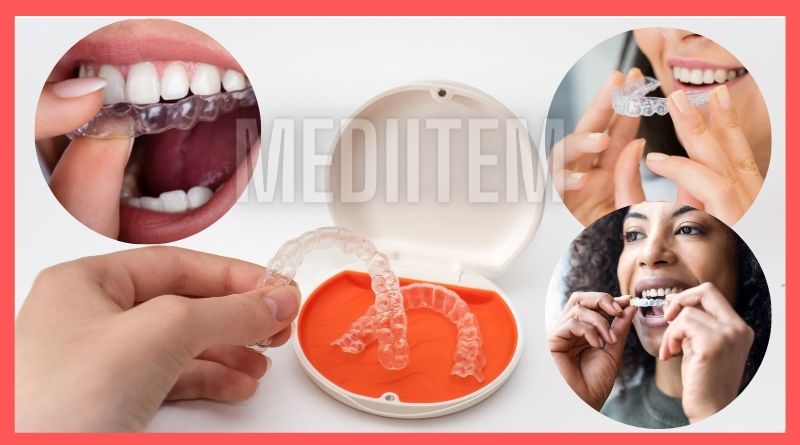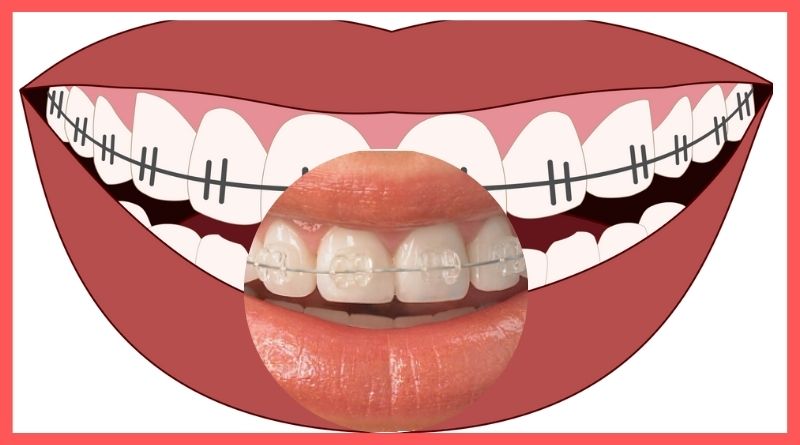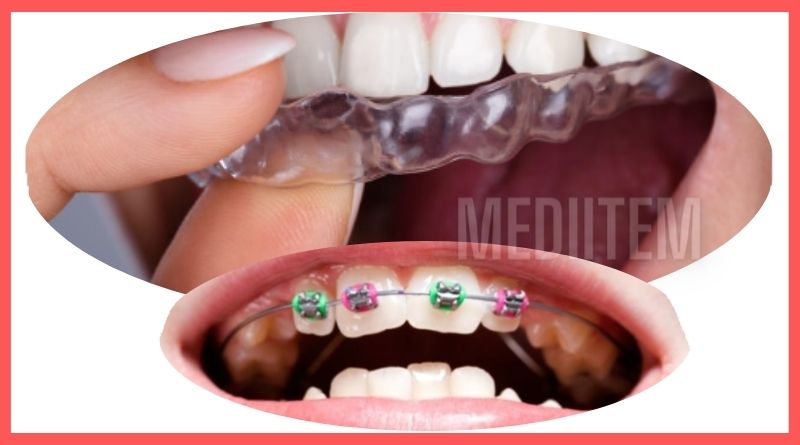Gingivitis is an inflammation of the gums that causes irritation, redness, and swelling in the gum. How to get rid of gingivitis fast, If it is not treated immediately, it can worsen and trigger another, much more serious disease, for example, periodontitis.
One of the factors that influences the appearance of gingivitis is poor oral hygiene. So the best way to avoid it is to maintain good cleaning habits: brush your teeth at least twice a day, floss daily, and visit the dentist periodically to check the condition of your teeth.
However, there are times when even taking the best prevention measures we can find ourselves in the situation of suffering from this condition. So we are going to explain to you what the symptoms and treatments you can find for gingivitis are.
What is gingivitis?
To know what gingivitis is, you must know the functioning of the periodontium and gums. This condition is the first phase of periodontal disease. At this time the pathology is completely reversible because it has not yet damaged the supporting tissues of the teeth.
But if we do not treat it as soon as possible, its evolution will lead to pyorrhea or periodontitis. At this time the pathology is irreversible and tooth loss may occur.
Gingivitis arises due to oral bacteria that have not been successfully eliminated. That is, if you do not brush your teeth properly, the bacterial plaque will calcify, turning into dental tartar and endangering your smile.
The reality is that bacteria are common in the mouth. Everyone has them because they are formed with food. But, they can be eliminated with good oral hygiene. At the dental clinic, we will help you limit these complications, preventing oral bacteria from causing damage to your smile.
Types of gingivitis
Although we normally always call this condition gingivitis, it has different variations that we show you below:
*Acute gingivitis:
Sudden inflammation in some random parts of the gums can last a short period and is characterized by the appearance of sensitivity.
*Desquamative gingivitis:
The color of the gum becomes bright red with dull gray plates. This layer comes off when rubbed, causing a lot of pain and bleeding. People with this variation may experience discomfort when brushing, intolerance to condiments, a burning sensation in the mouth, and sensitivity to changes in temperature.
*Ulcerative gingivitis:
You can perceive a grayish layer on the gums, a lot of pain, ulcers between the teeth, an unpleasant taste, bad breath, fever, and fatigue. In addition to the characteristic constant bleeding, redness, and pain.
*Hemorrhagic gingivitis:
It is identified by abnormal bleeding caused by bacterial plaque. Although it can also be due to internal or external trauma without the presence of gingival disease.
Chronic gingivitis:
Acute ulcerative necrotic gingivitis is an acute gum infection that appears with pain in the gums and affects a significant part of the mouth.
The onset is very abrupt, so we must be aware of possible symptoms, which may be:
*Bleeding spontaneously,
*The gums become whitish (since necrosis of the skin of the gums appears) and they flatten,
*Pus or suppuration,
*halitosis or bad breath,
*And in certain cases it may be accompanied by fever.
Acute gingivitis can appear especially during periods of significant emotional disorders such as anxiety. Also with other disorders of our health, where there is a significant decrease in defenses and an increase in certain microbial species such as spirochetes.
Read more: Most common tongue diseases, symptoms, treatment & more
What are the risk factors of gingivitis
*Poor oral hygiene.
*Advanced age.
*Dry mouth.
*Bad nutrition.
*Crooked teeth that are difficult to clean.
*Diseases that lower immunity, such as leukemia.
*Certain medications.
*Hormonal changes.
*Genetics.
*Viral or fungal infections.
Diagnosis for how to get rid of gingivitis fast
To determine if you have a gingivitis problem, the first thing the professional will take into account is your medical and dental history. In this way, we seek to rule out pathologies that may contribute to the appearance of this disease.
Once the previous point has been clarified, a complete examination of the mouth is done to detect signs of inflammation, bacterial plaque, or tartar. A dental probe will then be inserted between the gum line and your teeth to measure the depth of the pocket lining your teeth. Pockets with a depth greater than 4 millimeters may indicate that there is gingivitis.
Subsequently, some dental X-rays can be performed if deep pockets are detected. In this way, it is verified whether or not there is a decrease in bone mass.
If these tests fail to clarify the cause of gingivitis, the dentist may suggest further evaluations to rule out undiagnosed diseases. If the disease is already very advanced, the professional can refer you to a periodontal specialist.
What are the symptoms of gingivitis?
The most prominent symptoms and signs of gingivitis are the following:
*Swollen, reddish, and sensitive gums
*Bleeding gums, even more so when cleaning your mouth with a toothbrush and floss
*Gum recession
*Bad breath
*Pain when chewing food
*Visible pus around teeth
Remember that, if you present any of these symptoms, you should go to your trusted dentist to confirm or rule out the diagnosis.
What are the causes of gingivitis?
The main cause of gingivitis is poor oral hygiene which contributes to the formation of bacterial plaque on the teeth. The accumulation of these bacteria promotes irritation and inflammation of the tissue surrounding the gums, acting as follows:
The sugars and starches contained in our foods form a transparent film when they come into contact with the bacteria in our mouths. In this way, microorganisms accumulate around our tongue, teeth, and gums. Especially in areas that are difficult to access for toothbrush bristles.
Plaque tends to calcify under the gum margins, leading to the appearance of tartar, where bacteria thrive, causing redness and irritation. The tartar hardens in such a way that there is no way to remove it with ordinary brushing, but you must go to a specialist to perform a dental cleaning treatment.
All of this causes the gums to become inflamed, leading to gingivitis. The longer it takes to seek treatment, the greater the swelling, as well as the discomfort and bleeding, which will become more and more constant.
Main causes of gingivitis?
The accumulation of bacterial plaque is the main reason why gingivitis, cavities, and other oral conditions appear. If this plaque is not removed, it ends up hardening and generating tartar, which accumulates at the base of the tooth.
For this to happen, certain factors increase the risk of suffering from this problem. Let’s look at the causes of gingivitis :
*Appearance of infections and diseases throughout the body (systemic).
*Poor dental hygiene.
*Swollen gums during pregnancy due to hormonal changes.
*Uncontrolled diabetes.
*Tobacco consumption.
*Poor dental alignment.
*Rough edges of dental fillings.
*Poorly placed or contaminated dental appliances.
*Consumption of certain medications (for example, birth control pills).
*Advanced age.
*Dry mouth.
*Poor nutrition (vitamin C deficiency).
*Diseases that depress the immune system (cancer, HIV, etc.).
*Genetic issues.
How to cure gingivitis if it progresses?
If gingivitis is not detected or treated in time, it can progress and lead to periodontitis.
Periodontitis is a disease that damages the structures that make up the teeth and gums, causing bone and tooth loss.
It is chronic and is not reversible. Although it is possible to stop the progression of the disease and make the patient healthy, you must comply with the guidelines for periodontal maintenance and home care so that there is no risk of relapse.
For the treatment of periodontitis, the periodontist will determine the most appropriate treatment, which could be carried out in several phases:
1st Phase: The calculus located under the gum is removed by scraping and root planing.
2nd Phase: The level of success in removing the stone is analyzed and maintenance is carried out, as long as there is no bleeding.
3rd Phase: If deep stones are still detected, it may be necessary to resort to a surgical phase, which involves lifting the gum to clean the root. If necessary, it is also possible to even resort to the regeneration of the lost bone volume, through the application of different products.
In the most serious cases, the periodontal specialist may recommend different types of gum surgeries, or even a combination of them, to achieve optimal health.
What is the best treatment for gingivitis?
In general terms, we can say that the treatment of gingivitis is simple. On the one hand, there is a home treatment, which is carried out in the patient’s own home. On the other hand, there is a professional treatment, which is based on performing oral cleaning at the dental clinic.
1) Home remedies against gingivitis with How to get rid of gingivitis fast-
First of all, there are a series of habits and care that can be followed at home:
*Increase brushing frequency: brush your teeth after each meal for at least two minutes.
*Use a toothbrush with soft bristles: you can brush your teeth very regularly without damaging your gums.
*Renew your brush every three months: if you use it for longer, the bristles will be very weakened and will not remove plaque properly.
*Use dental floss or interproximal brushes during the last brushing of the day (before bed): if you are not used to flossing, start doing it gently so as not to hurt your gums.
*Use an electric toothbrush, instead of a manual one: these brushes have some very useful features. For example, a pressure sensor – to warn you if you are brushing too aggressively – or a timer – to tell you when you have reached two minutes.
*Rinse with a mouthwash after your last brushing of the day: choose one that contains fluoride.
*Add a dental irrigator to your hygiene routine: this is a device that expels water under pressure and is very effective in removing food debris from the interdental spaces.
*If you smoke, Once the previous home remedies have been mentioned, we recommend that you consult with your dentist about more specific hygiene care that you can follow from home.
That is to say, there are a large number of products on the market for different dental conditions, so it is highly advisable that the professional guide you on what type of dental floss, interproximal brushes, toothpaste or rinse you should use.
2) Professional treatment against gingivitis: How to get rid of gingivitis fast-
The other treatment to cure gingivitis consists of performing a professional oral cleaning.
Through this treatment, the bacterial plaque, tartar and superficial stains that the patient has on the enamel are eliminated. That is, those produced by tobacco, red wine, coffee, or tea, among others.
Dental cleaning, which is also known as gastrectomy, has different steps. However, the most important is ultrasound, a tool that uses high-frequency waves to dissolve tartar deposits.
With the combination of both treatments, the patient will be able to reverse gingivitis very quickly.
How to cure gingivitis at home
So how to cure gingivitis at home? How to get rid of gingivitis fast-
To know exactly, your trusted oral health specialist must tell you the guidelines you should follow according to your specific case.
Depending on how acute your gingivitis is, the guidelines to follow may vary, although regardless of the severity of the disease, we give you some tips on what to do to cure gingivitis at home:
1. Daily brushing:
Brushing your teeth correctly and regularly is one of the key factors in eliminating gingivitis.
You must brush your teeth at least 3 times a day, using a soft brush to avoid damaging your gums.
2. Mouthwashes:
Mouthwashes are a good option to improve your oral hygiene, as they help you eliminate plaque and bacteria found on your teeth and gums.
3. Dental floss:
Flossing is another good way to remove plaque buildup. It is recommended that you floss at least once a day after brushing your teeth.
4. Healthy diet:
A healthy and balanced diet is essential to maintain healthy oral health.
To do this, it is recommended that you avoid eating sugary or fatty foods, as these can increase the level of bacteria in your mouth.
5. Avoid tobacco consumption:
Tobacco is a factor that can negatively influence your oral health, causing the symptoms of gingivitis to worsen, so it is recommended that you avoid its consumption.
How to get rid of gingivitis fast with FAQ
How long does it take to cure gingivitis?
Gingivitis is a disease that can be cured practically immediately. That is, as soon as the patient begins to improve their hygiene routines and goes for cleaning, they will notice that the gingivitis is subsiding.
You can check this every day. For example, when you brush your teeth you will notice that, little by little, you begin to have less bleeding. The elimination of bleeding is undoubtedly a sign that gingivitis is healing.
When to see the dentist for gingivitis?
We insist: always. If you have the slightest symptom of gingivitis, whether because your gums are swollen, painful, red, bleeding frequently, or have any other discomfort, come to the consultation.
What antibiotic is good for gum infection?
Typically, gingivitis does not require antibiotics. The antibiotic is usually reserved for periodontitis. In any case, it will be the dentist who determines how each specific case of gingivitis should be treated.
We hope that this article has helped you better understand what gingivitis is and what the treatment is to cure it. But, above all, we would like to make you aware of the importance of following good hygiene habits and going to the dentist as soon as you detect that there is something in your mouth that is not working well.
Bone loss caused by the progression of gingivitis
If gingivitis progresses because it is not treated adequately and in time, it can cause important and serious periodontal diseases such as pyorrhea.
When this happens, the jaw bone is destroyed and in the last phase, we can lose our teeth. If this occurs, there is no choice but to resolve it with the placement of boneless dental implants, if the bone has been previously destroyed and we do not have enough, it will be necessary to carry out prior treatment or use dental implants or the technique All on Four.
What other gum diseases exist?
It is true that, despite the discomfort and even pain that it may sometimes cause, gingivitis is not a serious disease in itself.
The big problem with gingivitis is that, if left untreated, it can evolve and lead to ailments with much more important consequences.
That is why oral health professionals insist so much on the need to have regular check-ups and detect it as soon as possible.
Periodontitis:
Also called pyorrhea or gum disease, it is an advanced stage of gingivitis.
It occurs when the infection reaches the bone and affects the periodontium, which is the set of ligaments and tissues that hold the teeth.
While gingivitis is reversible, periodontitis is no longer reversible, but it can always be treated to prevent it from progressing and causing tooth loss.
Receding gums:
Receding gums are those that have worn down to allow the roots of some teeth to be seen.
Not only can they be an aesthetic problem, they also cause dental sensitivity.
Peri-implantitis:
In this case, gum inflammation occurs in the areas of the gum surrounding an implant.
The consequence of peri-implantitis is bone loss, so the dental implant can come loose.
Conclusion:
We must never miss the signals that our body sends us about our health. Gums that bleed, are swollen, or do not have a healthy pink color are some of these signs.
It is crucial to prevent, know how to identify and treat gingivitis before it becomes complicated and leads to more serious problems.
Recommended product
1) Gum Disease Help Tooth Powder…
2) Professional Clean Flossers…
3) Parodontax Toothpaste for Bleeding Gums, Gingivitis…
4) Vitamins D and more
Please subscribe to my channel and follow
YouTube


